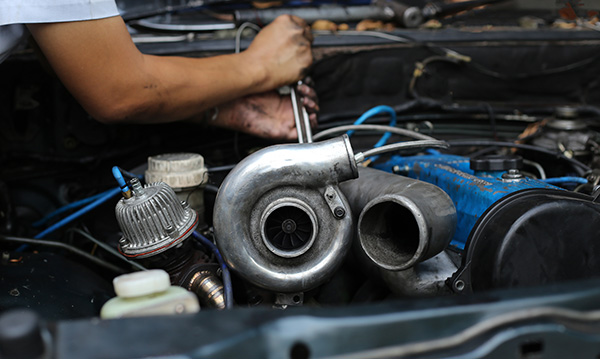
When it comes to car engines, you’ve likely heard the terms "turbocharged" and "naturally aspirated" thrown around. But what do they really mean, and how do they impact your driving experience? Understanding the differences between these two types of engines can help you make more informed decisions when purchasing or maintaining a vehicle. Let's break down what sets them apart and explore their advantages and disadvantages.
What is a Naturally Aspirated Engine?
A naturally aspirated engine is the more traditional type of engine that doesn’t rely on any form of forced induction. In simpler terms, it draws air into the engine naturally, without the assistance of a turbocharger or supercharger. The air enters the engine as the pistons move down the cylinders, creating a vacuum that sucks in air and mixes it with fuel for combustion.
Naturally aspirated engines have been around for over a century and are known for their straightforward design and reliability. They tend to deliver power more linearly, meaning the engine's response is predictable and smooth across the rev range. Because they don’t have additional components like turbochargers, these engines are generally easier and less expensive to maintain, and they are often favored by driving purists who appreciate the more connected feeling to the car’s throttle.
However, there’s a trade-off. Naturally aspirated engines may lack the outright power and efficiency of their turbocharged counterparts. To achieve high performance, these engines often need to be larger and consume more fuel, which can be less economical, particularly in smaller vehicles.
Turbocharged Engines
Turbocharged engines, on the other hand, use a device known as a turbocharger to force more air into the engine’s cylinders. This forced induction allows the engine to burn more fuel and produce more power than a similarly sized naturally aspirated engine. Turbochargers are powered by exhaust gasses that spin a turbine, compressing incoming air before it enters the engine.
One of the key benefits of turbocharged engines is that they can deliver more power from a smaller engine, making them ideal for fuel efficiency without sacrificing performance. This is why turbocharged engines are becoming increasingly common in modern cars, especially as manufacturers seek to meet stringent fuel economy and emissions regulations.
Turbocharged engines also offer more torque at lower RPMs, which translates to quicker acceleration and a more responsive driving experience. However, turbocharged engines are more complex and can be more expensive to maintain. They also introduce a phenomenon known as “turbo lag,” where there’s a slight delay between pressing the accelerator and the engine’s response due to the time it takes for the turbocharger to spool up.
Performance and Driving Experience
When it comes to performance, the choice between a naturally aspirated and a turbocharged engine depends on what you’re looking for in a driving experience.
Naturally Aspirated Engines:
- Offer a more linear and predictable power delivery, which some drivers find more satisfying.
- Typically, have a more direct throttle response, making them feel more connected to the driver’s input.
- They are often preferred in high-performance sports cars where a purer driving experience is desired.
Turbocharged Engines:
- Provide more power and torque from a smaller displacement, making them efficient and powerful.
- They are better suited for a balance of performance and fuel economy, making them ideal for everyday driving.
- The trade-off is the potential for turbo lag and more complex maintenance needs.
Fuel Economy and Environmental Impact
Fuel economy is another area where turbocharged engines often have an edge over naturally aspirated engines. Because they can produce more power with less fuel, turbocharged engines are generally more efficient, which can translate to lower fuel costs and reduced emissions.
However, this efficiency can be highly dependent on driving style. Aggressive driving that frequently engages the turbocharger can significantly decrease fuel efficiency, offsetting the benefits. On the flip side, naturally aspirated engines, especially when larger, tend to consume more fuel to achieve the same power output, which can lead to higher emissions.
Choosing the Right Engine for You
So, which engine is the best choice? It depends on your priorities. If you’re looking for a car with straightforward reliability and a more direct driving experience, a naturally aspirated engine might be more up your alley. However, if you want a vehicle that offers a blend of power and fuel efficiency with a bit more excitement, a turbocharged engine could be the way to go.
When deciding between the two, consider factors like your driving habits, the type of vehicle you need, and your willingness to deal with potentially higher maintenance costs.
Want to keep your car running at peak performance? Visit Brazzeal Automotive for a comprehensive inspection and maintenance service. Our skilled team will ensure your engine is in top shape, whether it's turbocharged or naturally aspirated.